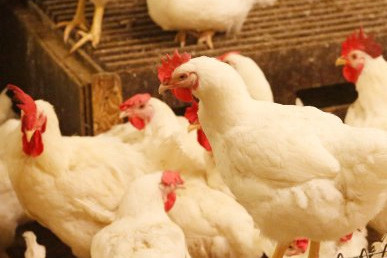EU Commission Outlook report – Bird flu hits expansion

Countries that have recorded high numbers of bird flu cases have seen a reduction in output which has led to slower expansion of EU poultry production.
And the European Commission believes expansion will continue to slow throughout the rest of the year and 2018.
The latest EU Commission Outlook report found that since November, when the bird flu epidemic took off, output has slumped by 12.5% in Bulgaria, 7.3% in Hungary and by smaller amounts in France and Germany.
Other countries helped offset these reductions with UK production rising by 10.5% and smaller rises recorded in Spain and the Netherlands.
While EU poultry meat production rose by 4.4% in 2016 compared to the previous year, it is expecting the 2017 figure to be just 1.7% up. The slowdown in production growth is expected to continue in 2018 with a 0.8% rise predicted.
The report found that trade was generally maintained despite the bird flu bans, although EU exports fell between January and April 2017, due to countrywide bans imposed by some major partners.
Exports to the two main export destinations for EU poultry in 2016 more than halved over the first four months of the year. South Africa took 58% less poultry while the Philippines reduced its EU imports by 62% . South Africa also imposed a provisional safeguard duty of 13.9% on EU imports for bone-in portion of chicken.
This led the US to benefit substantially. It increased its exports in the first quarter to South Africa from 9,700 tonnes last year to 35,000 tonnes this year. However, the situation could change if South Africa begins to lift the bans and the US prices stay above EU levels.
Brazil has been unable to benefit from the situation due to restrictions imposed following its meat scandal. The Commission announced last month (12 June) that it was highlighting a range of critical deficiencies identified by a team of EU health inspectors and asked for a number of measures to be taken, including physical checks on all consignments from Brazil at EU entry points.
As a result, South Africa is now currently the sixth importer of EU poultry behind Hong Kong, Ukraine, Saudi Arabia, Benin and Ghana.
But the reductions in exports to South Africa have been offset by rising exports to Hong Kong (+36%) and the Ukraine (+58%) and also to markets in Africa, such as Ghana, RDC Congo and Gabon.
“EU exports are thus showing that they have the flexibility to adapt to various disruptions of trade and moderate growth in exports is expected in 2017 (+1%).
EU poultry meat imports fell by 5% in volume in the first four months of the year, compared with 2016 due to the Brazilian meat scandal and an 11% reduction in imports from Thailand.
Thailand is increasing exports to other destinations, such as Japan and Malaysia, as well as taking advantage of shortages in China, due to bird flu outbreaks.
EU consumption per head of population is expected to rise from 23.8kg in 2016 to 24.1kg this year, with a further small rise – 24.2kg forecast for 2018.













